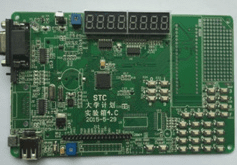Utilizing Intellectual Property (IP) in PCB Design
Enhancing Efficiency with Topology Planning and Routing Tools
Design engineers play a crucial role in acquiring Intellectual Property (IP) and strategizing essential components and interconnect paths for PCB board designers. This streamlines the design process and eliminates prolonged interactions.

Streamlining Interaction Between Engineers and Designers
By integrating topology planning and routing tools, PCB board designers can swiftly incorporate IP, reducing the need for iterative exchanges. This empowers designers to make informed decisions and optimize design outcomes.
Efficient Placement and Routing
Interactive placement and routing processes, while essential, can be time-consuming. Design engineers may provide initial plans lacking detailed scaling, bus widths, or pin-out indications, requiring collaboration with PCB board designers to finalize the design.
Optimizing Component Integration
PCB board designers must efficiently integrate components and establish interconnections using topology planning techniques. This approach enhances layout and interaction plans, improving overall design efficiency.
Detailed Topology Planning for Enhanced Design
Thorough topology planning involves considering obstacles, layer design rules, and constraints to optimize component pin connections and topological paths. By strategically transitioning between layers and utilizing vias, designers can ensure efficient signal routing and impedance control.
PCB Topology Planning and Auto-Routing
The topological path on layer 3 connects active devices, with connections made to pull-down resistors under the active device. Designers specify connections from layer 3 to layer 1, dividing component pins between active devices and pull-down resistors. Detailed planning takes about 30 seconds. After capturing the plan, PCB board designers may route immediately or create further plans and use auto-routing to complete all topology plans, taking less than 10 seconds.
Auto-Routing Results
Starting from the upper left corner, component pins’ wires follow the designer’s intent on layer 1, forming a tight bus structure detailed in Figure 4. The transition between layers 1 and 3 occurs at detail “3” with space-intensive vias. Impedance considerations result in wider traces with more space. 17 bits are categorized into 4 device types, capturing the designer’s intent in about 30 seconds. High-quality automatic routing takes approximately 10 seconds.
Engineering Change Order (ECO)
When FPGA pin-out changes, the PCB board designer adapts the plan, considering leads from other devices to the FPGA. Topology planning allows for modifications without the need to redo all traces. This abstraction level simplifies accommodating changes and prevents wasted space on high-density PCB boards. Auto-routing algorithms prioritize quality over quantity, making it easier to handle engineering change orders.
Quality Over Quantity
Auto-routing algorithms prioritize quality connections over quantity. Allowing some planned connections to fail is preferable to producing poor-quality cabling. This approach simplifies cleanup and ensures the designer’s intent is maintained. It’s crucial to maintain simplicity and localization in failed trace connections for easier adjustments.
Room for Improvement
Not all planned connections may be achieved 100%. Leaving some unconnected traces ensures flexibility for dead connections, facilitating easier adjustments. Topology planning streamlines the connection process, offering a relatively straightforward way to establish connections.
PCB Topology Planning for Efficient Design
PCB topology planning is an essential tool for design engineers working with digital signals. It simplifies the design process by offering specific capabilities for space, layer, and connection flow considerations. Designers can utilize this tool at the outset of a project or after acquiring IP, ensuring flexibility in fitting it seamlessly into their design environment.
The Topology Router functions by aligning with the designer’s plan, delivering high-quality routing outcomes. In scenarios involving Engineering Change Orders (ECOs), topology planning proves significantly faster than individual connections. This efficiency allows topology routers to swiftly implement ECOs, ensuring rapid results on the PCB board.


